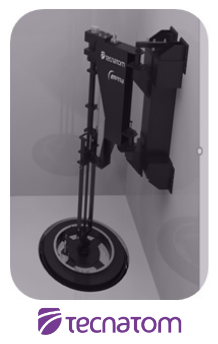The digital twin is a virtual replica of an asset or process that, by combining design information, process data and simulation capabilities, allows us to optimize the operation throughout its life.
What steps must be followed to build a digital twin?
Physical processes or assets that can undertake this journey to intelligence are very diverse and can be applied in different phases of their life, from design, through production or manufacturing, to exploitation and even the dismantling of assets.
In the conception phase, the digital twin allows us to optimize the design of the process, materials, control, testing how it will behave and the impact that different approaches will subsequently have on the construction and exploitation of the asset or process.
During the construction or development phase, the digital twin is a useful tool to optimize logistics, support tests or train the operators subsequently in charge of exploitation.
Finally, in the exploitation phase the digital twin can be enriched with real operating data, obtained by means of sensors or by tests and trials, allowing one to approach the simulation of the processes or assets from empirical data and applying artificial intelligence.
Let’s see an example of digital twin
Let’s take the example of a robotic arm. To design the equipment, its digital twin has been developed simulating its mechanical and logical behavior, so that the design is optimal for its function, to validate the control logic and to support the tests or for the training of future operators. In addition, when the robot comes online, its digital twin could receive the real process data, with which its maneuvers can be optimized, and thus improving safety and cost of operation.

What tools are used to model an asset?
There are two basic ways to approach the asset model:
- Modeling the physical behavior of assets through software tools or algorithms that replicate the physical behavior of assets, making it possible to predict their behavior, based on the input conditions. This type of approach is usually used in the early stages (product design) and can be complemented with empirical models as information is gathered from the asset itself or similar.
- Empirically applying artificial intelligence based on data about the functioning of assets or processes. It is generally used in processes that have already been put into operation and allows learning from the actual behavior of such processes.
Basic pillars for the development of a digital twin
Tecnatom as a simulation specialist has software to model electrical, thermo-hydraulic and logical processes. We also have monitoring tools that allow us to obtain the actual behavior data, and “what if” analysis models, among others. In addition, the company has specialists in data analytics and artificial intelligence and experts in energy and industrial processes.
Digital twins and their application in the industrial world
The digital twin can be applied to any asset or process that we can model from the fundamental physical-chemical equations, or from existing data. Currently they are being applied in aeronautics, petrochemical processes, in electrical distribution and transport systems, or in power generation, for example, in wind turbines. We have offered some ideas, but it is the reader who knows his processes best and the problems that a digital twin can help solve.
The two pillars for a successful journey to the digital twin are the data and the modeling of the processes or assets. Reaching the end of the journey means controlling your processes or assets more efficiently and applying continuous improvement.







